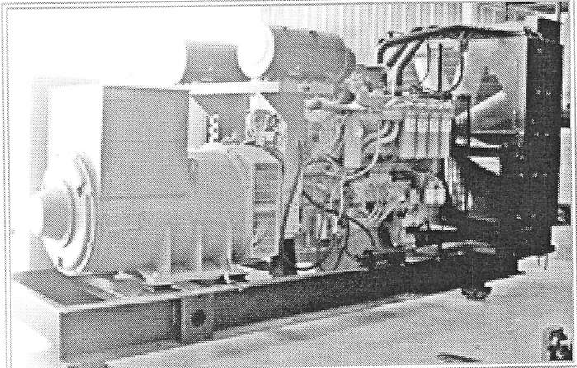Методическое пособие для студентов iv курса очного и заочного обучения специальности 26. 05. 07 "Эксплуатация судового электрооборудования и средств автоматики"
 Скачать 1.06 Mb. Скачать 1.06 Mb.
|
UNIT VI. SYNCHRONOUS ALTERNATORS 1. Read and remember the following words and word combinations.
2. Read and translate the text. SYNCHRONOUS ALTERNATORS This term refers to a particular type of generator the number of revolutions of which with standard frequency is coordinated with the number of pairs of poles. Synchronous alternators of small power are sometimes built like D.C. generators equipped with stationary poles and a rotating armature. The difference is that not the commutator but the armature winding is connected to the slip-rings causing its alternating current to flow into the external circuit. Taking into account that it is difficult to collect large power by means of sliding contacts, synchronous alternators are usually provided with rotating poles (the rotor) and a stationary armature (the stator). The power of such alternators is practically unlimited (1,400,000 kVA). The stator is found in a steel frame with the core mounted inside and assembled of 0,35 - 0,5 mm electrical steel laminations. The stator winding is laid in the core slots, its leads being brought out to the terminal box. Synchronous alternators may be either one-phased or three- phased. A three-phase alternator has the stator windings either star- or delta-connected in the terminal box. The greater part of shipboard alternators operates at the speed of rotation ranging from 500 to 1500 rev/min and has the rotor equipped with salient poles. The rotor is a steel shaft on which the cores of the poles with mounted on them excitation windings are fixed, their supply being obtained through slip-rings and brushes. The source of direct current is usually a shunt-wound generator (the exciter) which is mounted with asynchronous alternator on the same shaft. Synchronous alternators in marine application are those with silicon rectifiers in the excitation system, those with static excitation system, brushless alternators etc. Self-excited brushless alternators are the most widespread because they do not have either a commutator, slip-rings or brushes, which makes them more reliable and easier to operate. 3. Match the following English and Russian word combinations. a) standard frequency,stationary armature,slip ring, shipboard alternator , external circuit, sliding contacts, brushless alternator, steel frame, salient pole, terminal box, marine application b) стальной корпус, клеммный щит (коробка), скользящие контакты, морское исполнение, внешняя цепь, стандартная частота, токосъёмное кольцо, явный полюс, неподвижный якорь, бесщёточный генератор, судовой генератор переменного тока. 4. Match the synonyms. a) to refer, number, to mount, to operate, widespread, to get, b) to obtain, common, to install, to work, to call, amount 5. Answer the questions. 1. What does the term of “synchronous alternator” refer to? 2. What is the standard frequency for synchronous alternators equal to? 3. What are synchronous alternators equipped with when they are built like dc generators? 4. What are the main constructive elements of synchronous alternators? 5. How is the stator constructed? 6. What types of synchronous alternators can be distinguished according to their number of phases? 7. How is the rotor of shipboard alternators constructed? 8. What speed do shipboard alternators operate at? 9. What types of synchronous alternators in marine application do you know? 10. Which of synchronous alternators in marine application are the most widespread on board ship and why? 6. Speak about synchronous alternators. |
